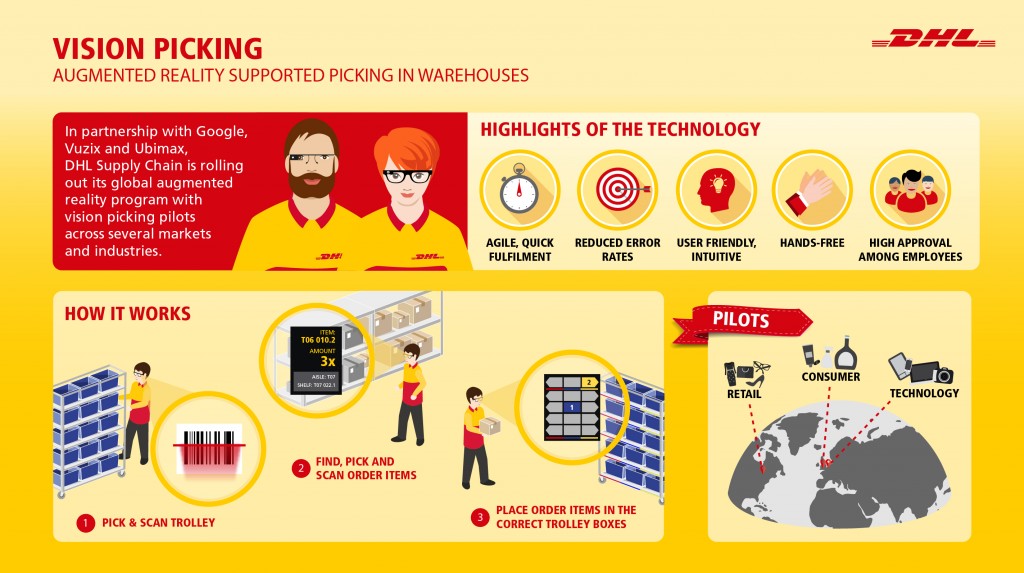
For years now, high-tech companies like Google, Vuzix, Ubimax, and others have promised that wearable technology will make our lives better and easier. But how will it actually work?
Look no further than a pilot program from global package delivery service DHL to understand the answer.
DHL Supply Chain, a subsidiary of the German company package delivery company, handles picking and warehousing operations for client companies. It recently began using “smart” glasses that tells workers what, where and when to pick packages in the blink of an eye … literally.
Glasses Show Workers What to Do
The trial Vision Picking Program at the Ricoh facility in Bergen op Zoom, the Netherlands, has been highly successful. Workers wearing the advanced smart glasses could view a virtual display that told them where each picked item should be placed on a portable trolley.
Pickers wearing the glasses worked faster, made fewer mistakes, and were able to pick every order hands free. Plus, employee satisfaction levels rose significantly after the technology was introduced.
Now DHL will expand the program to use the high-tech glasses at facilities worldwide, including some retail distribution centers in the United States, according to John Gilbert, CEO of DHL Supply Chain.
“We are excited to further test and develop vision picking as a solution that can be readily available to our customers,” Gilbert said in a DHL news release announcing the program’s expansion. “More importantly, this technology is not just one step towards digitalizing manual processes on the shop floor, it also takes us one step closer towards Industry 4.0. Testing technology like augmented reality, robotics, and Internet of things will continue to be a big part of our DNA.”
Expansion of Wearable Technology
Vision picking and other types of augmented reality are just the first steps in using technology to make supply chain operations faster, more efficient, and more accurate. And many companies in a wide variety of industries are beginning to recognize its benefits.
By 2025, the business of augmented reality via wearable technologies is expected to top $80 billion, according to an estimate from Goldman Sachs. In the past two years alone, an estimated $3.5 billion was spent on 225 venture capitalist investments related to the technology.
Augmented reality — which provides users with the critical information they can incorporate mid-task via such wearable devices as glasses, watches, earphones, and more — is predicted by some futurists to be the next big thing.
Wearable technology could change workplaces during the next decade in the same way smartphones changed the way people are entertained, shop, and communicate with each other during the last 10 years.
